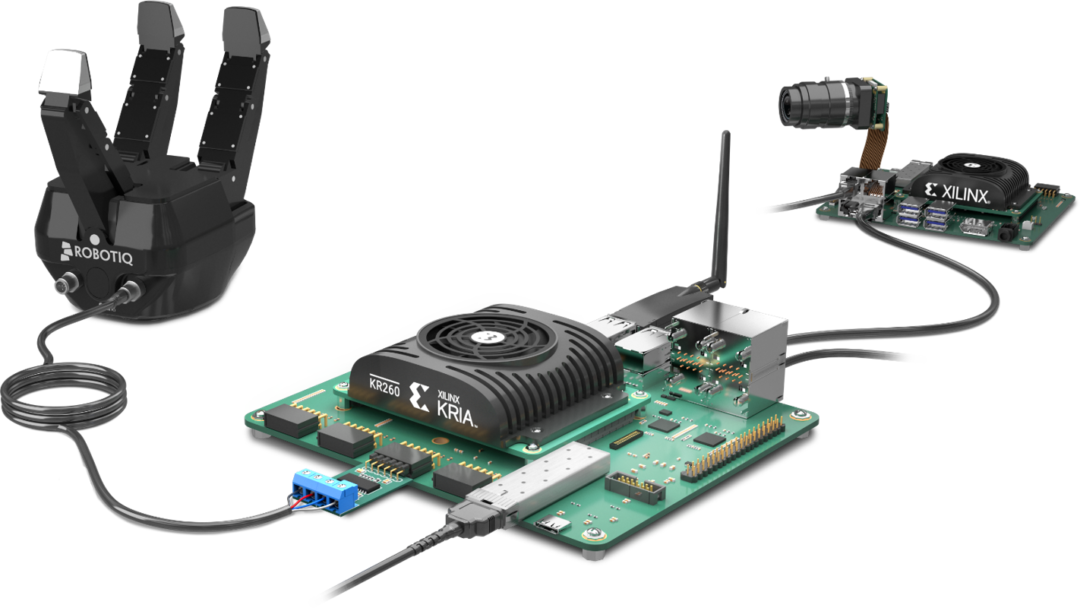Time: 2025-05-08 11:48:35View:
FPGAs (Field-Programmable Gate Arrays) are increasingly vital in robotics due to their unique combination of real-time processing, parallel computing, and hardware flexibility. Here’s why they are indispensable:

Robots require deterministic, low-latency responses for tasks like:
Sensor fusion (LiDAR, cameras, IMUs)
Motor control (PID loops at µs-level latency)
Collision avoidance (instantaneous reaction)
✅ FPGA Advantage:
Hardware-level parallelism ensures predictable timing (no OS delays).
Example: A motor controller in an FPGA can react 10–100x faster than a software-based solution on a CPU.
Robots integrate data from multiple sensors (vision, LiDAR, ultrasonic, etc.), which must be processed simultaneously.
✅ FPGA Advantage:
Dedicated hardware circuits for each sensor (true parallelism).
Example:
Process camera data (CNN inference) while
Running SLAM algorithms and
Controlling servo motors—all in parallel.
Battery-powered robots (drones, AGVs) need high performance per watt.
✅ FPGA Advantage:
Custom hardware accelerators (e.g., for CNN inference) consume far less power than GPUs/CPUs.
Example:
A Xilinx Zynq FPGA uses <5W for real-time object detection vs. 30W+ for a GPU.
Robots often need field upgrades for new algorithms or sensors.
✅ FPGA Advantage:
Can be reprogrammed on-the-fly (unlike ASICs).
Example:
Switch between autonomous navigation and industrial pick-and-place modes by loading different bitstreams.
Deep learning in robotics requires fast, efficient inference at the edge.
✅ FPGA Advantage:
Custom neural network accelerators (e.g., Xilinx DPU, Intel OpenVINO).
Achieve <5ms latency for object detection (vs. 50ms on a CPU).
Industrial robots operate in high-vibration, high-temperature settings.
✅ FPGA Advantage:
No moving parts (unlike HDDs).
Radiation-tolerant FPGAs (e.g., Xilinx Kintex UltraScale) for space robotics.
Robots often use specialized sensors (Time-of-Flight cameras, SPI/I²C devices).
✅ FPGA Advantage:
Implement any communication protocol (e.g., custom LiDAR interfaces).
Example:
Process 10Gbps LiDAR data directly in the FPGA (no CPU bottleneck).
Modern robotic systems combine FPGAs with CPUs/GPUs (e.g., Xilinx Zynq, Intel Cyclone V).
✅ FPGA Advantage:
Offload real-time tasks to FPGA (e.g., motor control).
Run Linux on the CPU for high-level planning.
| Feature | FPGA | CPU/GPU |
|---|---|---|
| Latency | µs-level | ms-level |
| Parallelism | True hardware parallel | Software threads |
| Power Efficiency | Ultra-low power | High power consumption |
| Determinism | Guaranteed timing | OS-dependent |
| Flexibility | Reconfigurable | Fixed architecture |
Autonomous Drones
Real-time obstacle avoidance (Stereo vision + LiDAR fusion).
Industrial Robot Arms
High-precision motor control (sub-µs latency).
Autonomous Vehicles
Sensor fusion (Radar + Camera + LiDAR).
Medical Robots
Low-latency haptic feedback.
Space Robots
Radiation-hardened control systems.
AI at the Edge: FPGAs with dedicated AI accelerators (e.g., Xilinx Versal).
5G Robots: FPGAs enabling ultra-low-latency wireless control.
Swarm Robotics: FPGAs coordinating 100s of robots with synchronized timing.
FPGAs are the backbone of modern robotics because they provide:
Real-time performance (critical for safety).
Energy efficiency (extends battery life).
Adaptability (future-proof for new algorithms).
For roboticists, learning FPGA design is becoming as essential as mastering ROS or machine learning.